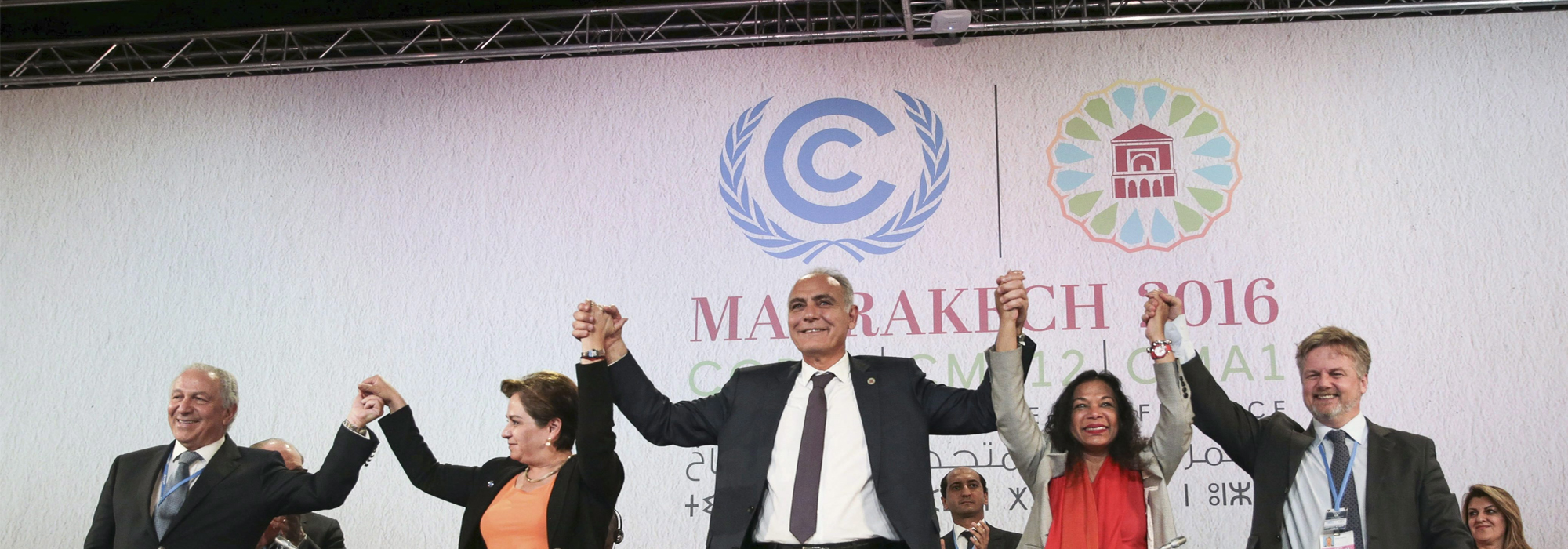
As momentum builds domestically and internationally to meet the objectives of the Paris Agreement on climate change, a serious gap has emerged between our level of ambition and our actions. This gap is most apparent in fossil-fuel producing countries like Canada and Norway that have committed to reducing GHG emissions, while simultaneously maintaining or increasing oil and gas production. So far, we have only been responsible for the emissions from fossil fuels consumed within our borders, and not for the actual production of fossil fuels. Put another way, we are focused on the “demand side” of the equation, rather than the “supply side.”
Despite the growing evidence and reports by the worlds leading scientists that to maintain a safe climate we need to constrain the majority of our oil, gas and coal reserves, there is no incentive for countries to keep it in the ground. We are told instead that climate policy, including carbon pricing and regulations on industrial emissions, will reduce demand to such an extent that the markets will constrain production. The problem is, that strategy is not working fast enough to keep global temperatures below a 2°C rise above pre-industrial levels, the bar set in the Paris agreement.
Meanwhile, industry and government in Canada and Norway argue that they have a right to compete supplying the world with oil and gas. Recent reports have shown that if you add up oil, coal and gas reserves currently under production and in development, we will exceed the 2°C rise. In Marrakech last month at the COP22 international climate change talks, more than 400 civil society organizations from 60 countries declared that we cannot allow any further expansion of fossil fuel production if we want to ensure we maintain a safe and stable climate. Without better accounting for the supply that we put into the system, we appear to be headed for the ultimate tragedy of the commons — all countries acting in their individual interests, regardless of the environmental impact.
Perhaps Columbia University’s Jeffrey Sachs put the dilemma most succinctly when he questioned the United States’ and Canada’s commitment to the Paris agreement, given the development of new oil pipelines. “How can we ensure decarbonization if developed economies are drug pushers of oil, gas, coal?” he asked in Marrakech.
The central problem is that the accounting system for global emissions was designed decades ago, before we knew how much greenhouse gas emissions could be emitted into the atmosphere without causing catastrophic climate change (see the IPCC synthesis report 2014). Countries are now focused on meeting their national determined commitments for reducing their emissions, but not on the impact of putting more fossil fuels into the global system. Norway continues to subsidize and intensify large scale petroleum exploration and developments by covering 78 percent of the costs for the oil companies, especially in its Arctic territories. Canada is still set to increase oil production in the coming decade and has just approved new major pipelines. In addition, the Canadian government recently cleared the way for an liquefied natural gas plant in British Columbia that will be the single largest point source of emissions in the country if it is built.
Canada and Norway both count on carbon prices helping to increase innovation, make expensive technologies accessible and ultimately reduce domestic emissions. And yet, over the last several decades it has become clear that effective mechanisms to reduce emissions such as cap-and-trade systems, efficient carbon taxes, and regulations on buildings and vehicles, have been very politically difficult (if not impossible) to enact at levels that are stringent enough to constrain production. The result is that regulation and innovation in both countries reduces domestic emissions and strives towards reducing per barrel emissions of fossil fuel production, while continuing to pump out oil into the global marketplace. Can we call ourselves “climate leaders” if we don’t account for or strive to reduce the majority of emissions from our domestic production of fossil fuels?
Now that we have the Paris Agreement in force, fossil-fuel-producing states and provincial governments need to plan for reduced emissions and reduced production to ensure a climate safe world. As long as doing our “fair share” is defined by decision-makers as meeting our emissions reduction targets, without any supply side accounting, we will fail in our ambition to limit global warming to below a 2°C rise. We can and must do better than that, but it will require both of our countries to lead in developing accounting mechanisms and policy pathways to not only reduce emissions but to keep carbon in the ground.
Photo: Mosa’ab Elshamy/AP Photo
Do you have something to say about the article you just read? Be part of the Policy Options discussion, and send in your own submission. Here is a link on how to do it. | Souhaitez-vous réagir à cet article ? Joignez-vous aux débats d’Options politiques et soumettez-nous votre texte en suivant ces directives.






